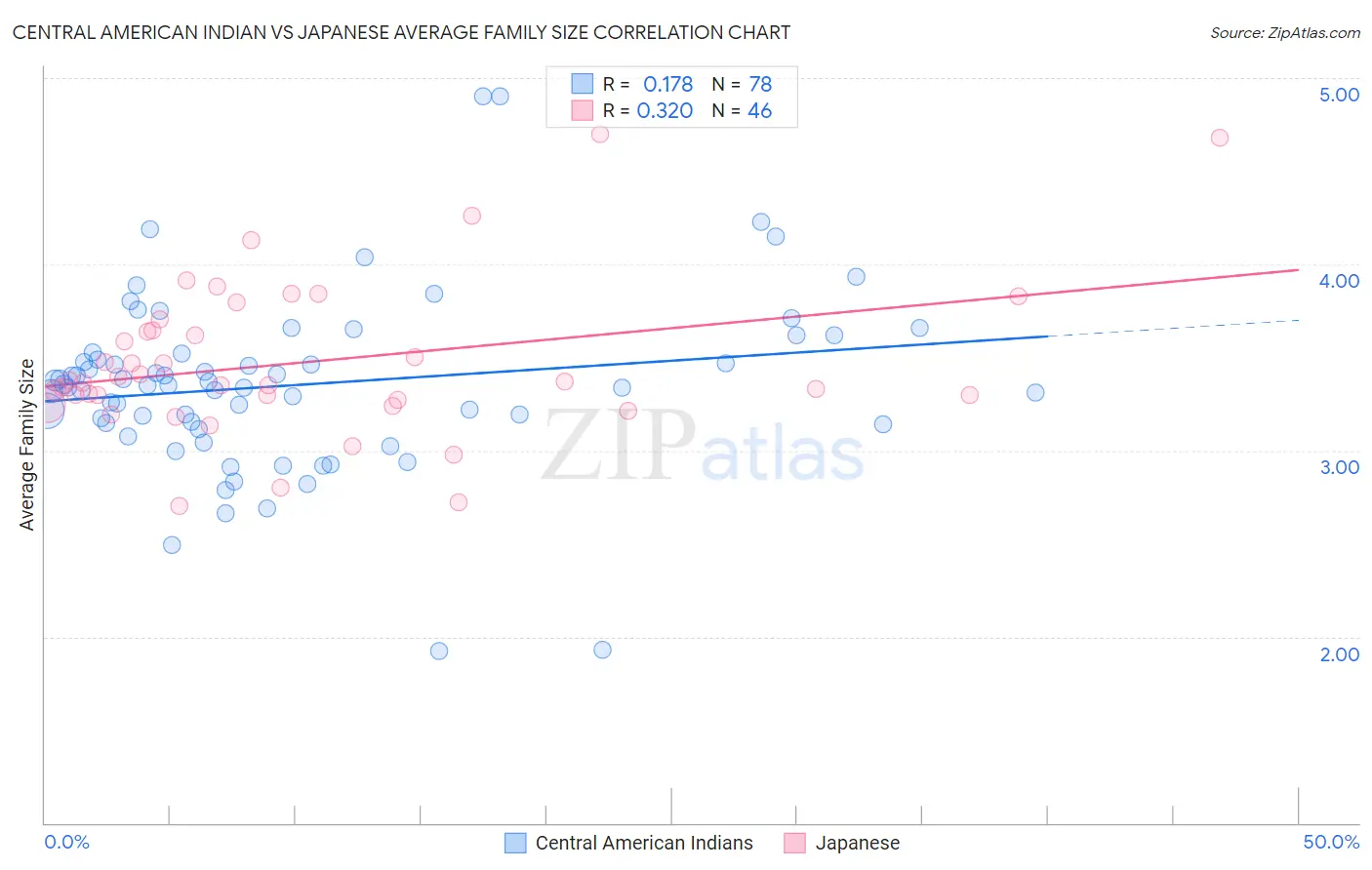Central American Indian vs Japanese Average Family Size
COMPARE
Central American Indian
Japanese
Average Family Size
Average Family Size Comparison
Central American Indians
Japanese
3.35
AVERAGE FAMILY SIZE
100.0/ 100
METRIC RATING
61st/ 347
METRIC RANK
3.35
AVERAGE FAMILY SIZE
100.0/ 100
METRIC RATING
59th/ 347
METRIC RANK
Central American Indian vs Japanese Average Family Size Correlation Chart
The statistical analysis conducted on geographies consisting of 326,061,161 people shows a poor positive correlation between the proportion of Central American Indians and average family size in the United States with a correlation coefficient (R) of 0.178 and weighted average of 3.35. Similarly, the statistical analysis conducted on geographies consisting of 249,073,483 people shows a mild positive correlation between the proportion of Japanese and average family size in the United States with a correlation coefficient (R) of 0.320 and weighted average of 3.35, a difference of 0.050%.

Average Family Size Correlation Summary
| Measurement | Central American Indian | Japanese |
| Minimum | 1.92 | 2.70 |
| Maximum | 4.90 | 4.70 |
| Range | 2.98 | 2.00 |
| Mean | 3.35 | 3.47 |
| Median | 3.35 | 3.37 |
| Interquartile 25% (IQ1) | 3.15 | 3.27 |
| Interquartile 75% (IQ3) | 3.52 | 3.65 |
| Interquartile Range (IQR) | 0.37 | 0.38 |
| Standard Deviation (Sample) | 0.48 | 0.42 |
| Standard Deviation (Population) | 0.48 | 0.41 |
Demographics Similar to Central American Indians and Japanese by Average Family Size
In terms of average family size, the demographic groups most similar to Central American Indians are Immigrants from Armenia (3.35, a difference of 0.030%), Honduran (3.35, a difference of 0.14%), Sri Lankan (3.35, a difference of 0.15%), Immigrants from Grenada (3.34, a difference of 0.19%), and Chinese (3.34, a difference of 0.20%). Similarly, the demographic groups most similar to Japanese are Immigrants from Armenia (3.35, a difference of 0.020%), Honduran (3.35, a difference of 0.090%), Sri Lankan (3.35, a difference of 0.10%), Immigrants from Dominican Republic (3.35, a difference of 0.15%), and Immigrants from Honduras (3.36, a difference of 0.22%).
| Demographics | Rating | Rank | Average Family Size |
| Immigrants | Bangladesh | 100.0 /100 | #50 | Exceptional 3.36 |
| Nicaraguans | 100.0 /100 | #51 | Exceptional 3.36 |
| Fijians | 100.0 /100 | #52 | Exceptional 3.36 |
| Koreans | 100.0 /100 | #53 | Exceptional 3.36 |
| Immigrants | South Eastern Asia | 100.0 /100 | #54 | Exceptional 3.36 |
| Immigrants | Honduras | 100.0 /100 | #55 | Exceptional 3.36 |
| Immigrants | Dominican Republic | 100.0 /100 | #56 | Exceptional 3.35 |
| Sri Lankans | 100.0 /100 | #57 | Exceptional 3.35 |
| Hondurans | 100.0 /100 | #58 | Exceptional 3.35 |
| Japanese | 100.0 /100 | #59 | Exceptional 3.35 |
| Immigrants | Armenia | 100.0 /100 | #60 | Exceptional 3.35 |
| Central American Indians | 100.0 /100 | #61 | Exceptional 3.35 |
| Immigrants | Grenada | 100.0 /100 | #62 | Exceptional 3.34 |
| Chinese | 100.0 /100 | #63 | Exceptional 3.34 |
| Dominicans | 99.9 /100 | #64 | Exceptional 3.34 |
| Immigrants | Laos | 99.9 /100 | #65 | Exceptional 3.34 |
| Immigrants | St. Vincent and the Grenadines | 99.9 /100 | #66 | Exceptional 3.34 |
| Immigrants | Jamaica | 99.9 /100 | #67 | Exceptional 3.33 |
| Immigrants | Cambodia | 99.9 /100 | #68 | Exceptional 3.33 |
| Immigrants | Immigrants | 99.9 /100 | #69 | Exceptional 3.33 |
| Immigrants | Trinidad and Tobago | 99.9 /100 | #70 | Exceptional 3.33 |